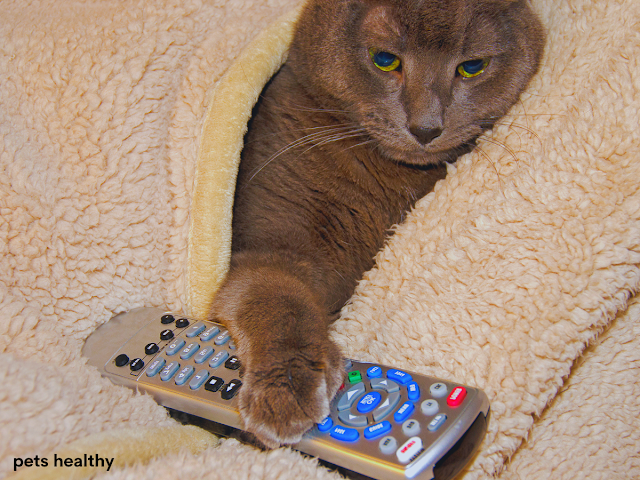Introduction:
Cats are amazing animals that capture our attention with their special actions.. Many cat owners have observed their feline friends showing interest in television programs, raising questions about their ability to comprehend what they see on the screen. In this article will explore whether cats can comprehend television and examine the elements that influence their interaction with screens.
Can Cats See TV and Perceive Images?
Gaining insight into cats' television viewing experience necessitates an understanding of their visual capabilities. Cats possess cone cells in their retinas, which enhance their visual clarity and enable binocular vision.
while cats have limitations in perceiving the full spectrum of colors, they still establish the ability to distinguish between different shades of red, green, and blue. Additionally, cats' superior night vision, attributed to a higher number of rod cells compared to humans, enables them to detect movement in dimly lit environments.
Sensory Reactions and Behavioral Responses:
Cats' engagement with television involves both sensory and behavioral reactions. The combination of color and movement on the screen attracts their attention, stimulating their innate hunting instincts. Swiftly moving objects, particularly those resembling prey, tend to captivate cats. Their acute sense of hearing plays a significant role as well, allowing them to detect sounds associated with potential prey. This combination of visual and auditory stimuli can trigger a cat's desire to pounce and chase, creating an engaging experience for them.
Research Insights and Enrichment Benefits:
Studies, such as the 2008 research conducted by the School of Psychology at Queen's University Belfast, have shed light on the impact of television on indoor cats' enrichment. Two-dimensional visual stimulation, especially images featuring elements of prey and linear movement, has been found to provide a level of enrichment for cats. This enrichment factor is particularly relevant for cats lacking access to outdoor views. Television programming and interactive game apps designed specifically for cats can serve as valuable tools for environmental enrichment, helping to engage their hunting instincts and alleviate anxiety in stressful situations.
Understanding Your Cat's Reactions:
While cats may show interest in on-screen antics, it's crucial to observe their behavior and ensure their engagement remains positive. As natural hunters, cats may exhibit frustration when they are unable to capture their electronic prey. It's essential to supplement television time with interactive play and in-person engagement to maintain a healthy balance. Nothing can replace the joy and bonding that comes from playing with your cat using catnip toys or setting up observation spots for them to enjoy real-life nature shows.
Conclusion:
Although cats may not possess an identical understanding of television as humans do, they possess the visual acuity to perceive specific elements displayed on the screen. Television programming can serve as a source of enrichment for cats, activating their innate hunting instincts and offering solace during moments of stress. By comprehending cats' sensory responses and implementing a well-rounded approach to their entertainment, we can forge a gratifying and captivating viewing experience tailored to our feline companions.
Alternative: While cats may not grasp television in the same manner as humans, they do have the capacity to visually observe and comprehend certain aspects shown on the screen. Television programming can serve as a means of enrichment for cats, igniting their instinctual hunting behaviors and providing comfort during challenging circumstances. By acknowledging cats' sensory reactions and adopting a harmonized approach to their entertainment, we can craft an affirmative and captivating viewing experience for our cherished feline companions.
1: What are some common behaviors exhibited by cats?
Cats commonly display behaviors such as scratching, kneading, grooming, hunting, and territorial marking.
2: How long do cats typically live?
On average, cats typically live between 12 to 16 years, although with proper care, certain cats can reach their twenties in terms of lifespan.
3: Are certain breeds of cats hypoallergenic?
Although it is important to note that no cat breed can be considered entirely hypoallergenic, certain breeds like the Sphynx or Russian Blue may generate fewer allergens or cause fewer allergic reactions in specific individuals.
4: How can I keep my cat entertained and mentally stimulated?
Providing toys, scratching posts, interactive playtime, puzzle feeders, and vertical spaces for climbing can help keep your cat engaged and mentally stimulated.
5: Do cats need regular veterinary care?
Yes, cats should receive routine check-ups and vaccinations to maintain their health. Regular veterinary care helps prevent and detect any potential health issues early on.
6: How can I introduce a new cat to my existing cat?
Gradual and supervised introductions, using scent swapping and separate living spaces initially, can help cats adjust and form positive relationships with each other.
7: How can I prevent my cat from scratching furniture?
Providing appropriate scratching posts, trimming your cat's nails regularly, and using deterrents such as double-sided tape or citrus sprays can help redirect their scratching behavior.
8: How can I litter train my cat?
Start by providing a clean litter box in a quiet and accessible location, and gently place your cat in the litter box after meals or naps. Positive reinforcement and consistency are key to successful litter training.

.png)

.png)
%20(1).png)
Comments
Post a Comment